| | Mathison Museum of Natural History |  |
|
+12landrover Kikimalou bmathison1972 Taos widukind Jill Duck-Anch-Amun lucky luke Caracal rogerpgvg Roger Bloodrayne 16 posters |
|
| Author | Message |
|---|
bmathison1972
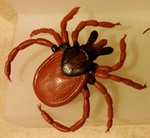
Country/State : Salt Lake City, UT
Age : 52
Joined : 2010-04-13
Posts : 6718
 |  Subject: Re: Mathison Museum of Natural History Subject: Re: Mathison Museum of Natural History  Sun May 26, 2024 10:04 pm Sun May 26, 2024 10:04 pm | |
| Species: Phalacrocorax carbo sinensis (Stauton, 1796) Common name(s): Eurasian great cormorant; Continental great cormorant About the Figure: Manufacturer: Kaiyodo Series: Choco Q Animatales Series 6 Year of Production: 2002 Size/Scale: Scale difficult to measure due to posture but body length approximately 8.0 cm for a scale of 1:10.5-1:11.3 (see below) Frequency of species in toy/figure form (at time of posting): Rare Miscellaneous Notes: This is the second time we've seen P. carbo in the Museum, although the last time was the nominate subspecies by Papo. Unlike Papo's figure, today's by Kaiyodo is painted in its full breeding plumage! Being one of the original Animatales figures, assembly is required. The scale above was calculated for the species as a whole, and P. c. sinensis is the smallest of the 4-5 subspecies (see below). About the Animal: Geographic distribution: Eastern Eurasia, from north-central Europe to China and Japan; wintering in Southeast Asia and Indonesia Habitat: Ocean and sea coasts, large inland lakes and rivers; breeding usually occurs more inland Diet: Fish IUCN Status (at time of posting): Least Concern[at the species level] Miscellaneous Notes: Depending on the taxonomy followed, there are 4-5 subspecies of P. carbo: P. c. carbo (North Atlantic), P. c. novaehollandiae (Australia, Tasmania, New Zealand, Chatham Islands), P. c. sinensis (north-central Europe to East Asia), P. carbo hanedae (Japan: Honshu Island), and P. c. maroccanus (coastal northwestern Africa), the last of which is sometimes considered a subspecies of the white-breasted cormorant, P. lucidus. [You must be registered and logged in to see this image.] |
|
  | |
widukind
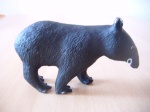
Country/State : Germany
Age : 48
Joined : 2010-12-31
Posts : 45777
 |  Subject: Re: Mathison Museum of Natural History Subject: Re: Mathison Museum of Natural History  Mon May 27, 2024 6:24 pm Mon May 27, 2024 6:24 pm | |
| |
|
  | |
Caracal
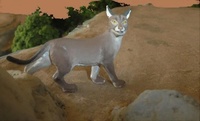
Country/State : France
Age : 65
Joined : 2018-10-25
Posts : 7261
 | |
  | |
bmathison1972

Country/State : Salt Lake City, UT
Age : 52
Joined : 2010-04-13
Posts : 6718
 |  Subject: Re: Mathison Museum of Natural History Subject: Re: Mathison Museum of Natural History  Mon May 27, 2024 10:10 pm Mon May 27, 2024 10:10 pm | |
| Species: Danaus plexippus (Linnaeus, 1758) Common name(s): monarch; milkweed butterfly About the Figure: Manufacturer: CollectA Series: Little Wonders Year of Production: 2013 Size/Scale: If spread like an actual specimen, the wingspan would come to approximately 9.3 cm, within scale 1:1 Frequency of species in toy/figure form (at time of posting): Common Miscellaneous Notes: This is the eleventh time we have seen D. plexippus in the Museum. This is one of the few butterflies produced by major manufacturers that got the number of functional legs correct (four) for a member of the family Nymphalidae (see below). CollectA did not get this right three years earlier when they produced their small tortoiseshell butterfly, however! About the Organism: Geographic distribution: North, Central, and South America, the Caribbean, the Azores, Canary Islands, North Africa, Australia, Philippines, and South Pacific islands; rare stray to the United Kingdom Habitat: Fields, forests, parks, gardens, disturbed areas Diet: Larvae feed on milkweeds in the family Apocynaceae, especially members of the genus Asclepias; adults take nectar from a variety of flowers IUCN Status (at time of posting): Least Concern Miscellaneous Notes: Members of the family Nymphalidae are called brush-footed butterflies, due to their extremely reduced forelegs. The function of these reduced legs is uncertain, but the leading theory is that they are used as accessory organs for smell, since they possess a modified set of brush-like setae (hence the common name). [You must be registered and logged in to see this image.] |
|
  | |
widukind

Country/State : Germany
Age : 48
Joined : 2010-12-31
Posts : 45777
 |  Subject: Re: Mathison Museum of Natural History Subject: Re: Mathison Museum of Natural History  Tue May 28, 2024 3:44 am Tue May 28, 2024 3:44 am | |
| |
|
  | |
bmathison1972

Country/State : Salt Lake City, UT
Age : 52
Joined : 2010-04-13
Posts : 6718
 |  Subject: Re: Mathison Museum of Natural History Subject: Re: Mathison Museum of Natural History  Tue May 28, 2024 9:40 pm Tue May 28, 2024 9:40 pm | |
| Species: Cerambyx cerdo Linnaeus, 1758 Common name(s): great capricorn beetle About the Figure: Manufacturer: AAA Series: Insects Year of Production: unknown Size/Scale: Body length (excluding appendages) approximately 6.5 cm for a scale of 2.7:1-1.2:1 Frequency of species in toy/figure form (at time of posting): Unique Miscellaneous Notes: This figure came in a polyvinyl bag with set of otherwise generic insects and the identification is my own. About the Animal: Geographic distribution: Europe, Asia Minor, North Africa Habitat: Oak woodlands, suburban areas Diet: Larvae develop in living and dying Quercus (oak); adults feed on oak sap IUCN Status (at time of posting): Vulnerable Miscellaneous Notes: Cerambyx cerdo is threatened throughout much of its range due to habitat destruction and alteration, such as the removal of partially dead oak trees in open and semi-open woodlands. In some places it was become extinct, such the British Isles. Interestingly, in some parts of the Mediterranean, it has become a pest of ornamental trees in urban and suburban settings. [You must be registered and logged in to see this image.] |
|
  | |
widukind

Country/State : Germany
Age : 48
Joined : 2010-12-31
Posts : 45777
 |  Subject: Re: Mathison Museum of Natural History Subject: Re: Mathison Museum of Natural History  Wed May 29, 2024 3:08 am Wed May 29, 2024 3:08 am | |
| |
|
  | |
bmathison1972

Country/State : Salt Lake City, UT
Age : 52
Joined : 2010-04-13
Posts : 6718
 |  Subject: Re: Mathison Museum of Natural History Subject: Re: Mathison Museum of Natural History  Wed May 29, 2024 9:41 pm Wed May 29, 2024 9:41 pm | |
| Species: Ovis canadensis Shaw, 1804 Common name(s): bighorn sheep About the Figure: Manufacturer: Safari Ltd. Series: Wild Safari North American Wildlife Year of Production: 2005 Size/Scale: Height at shoulders approximately 5.5 cm for a scale of 1:16.4-1:19.1 Frequency of species in toy/figure form (at time of posting): Rare Miscellaneous Notes: With the retirement of this figure in 2011, there are no standard-sized versions of this species readily available on the market. To the best of my knowledge, the species was never made by Bullyland, Schleich, Papo, or CollectA. Standard (or slightly larger than) figures were also produced by AAA, Treehouse Kids, K&M International, New-Ray, and possibly others, but they can be hard to find. About the Animal: Geographic distribution: Western North America Habitat: Alpine meadows, grassy mountain slopes, desert mountains, and foothills in proximity to rugged, rocky cliffs and bluffs Diet: Grasses, sedges, forbs; desert populations eat a wider range of plants and get the majority of their water from plants IUCN Status (at time of posting): Least Concern Miscellaneous Notes: There are currently three subspecies of bighorn sheep. The Rocky Mountain bighorn is the nominate subspecies, O. c. canadensis. It occurs in the Rocky Mountains and Pacific Northwest. The Sierra Nevada bighorn, O. c. sierrae, occurs in the Sierra Nevada Mountains in California although historic populations may have ranged into the California Coastal Ranges. The desert bighorn sheep, O. c. nelsoni occurs throughout arid regions of the southwestern United States and northern Mexico; the desert bighorn can be further divided into three genetic lineages (formerly independent subspecies) that occupy desert habitats that vary significantly in climate and vegetation. Molecular studies suggest the Rocky Mountain and Sierra Nevada bighorns diverged from the desert bighorn sheep during, or prior to, the Illinoian glaciation roughly 315-94 thousand years ago. [You must be registered and logged in to see this image.] |
|
  | |
Joliezac
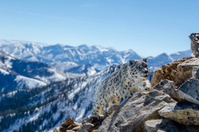
Country/State : New Jersey, USA
Age : 22
Joined : 2021-04-27
Posts : 2436
 |  Subject: Re: Mathison Museum of Natural History Subject: Re: Mathison Museum of Natural History  Wed May 29, 2024 11:54 pm Wed May 29, 2024 11:54 pm | |
| An excellent and unique model!
_________________
Jolie
Animal Ark Website
Animal Figure Photography Website
|
|
  | |
widukind

Country/State : Germany
Age : 48
Joined : 2010-12-31
Posts : 45777
 |  Subject: Re: Mathison Museum of Natural History Subject: Re: Mathison Museum of Natural History  Thu May 30, 2024 3:33 am Thu May 30, 2024 3:33 am | |
| |
|
  | |
Jill

Country/State : USA
Age : 39
Joined : 2021-04-13
Posts : 2350
 |  Subject: Re: Mathison Museum of Natural History Subject: Re: Mathison Museum of Natural History  Thu May 30, 2024 10:27 am Thu May 30, 2024 10:27 am | |
| Seeing a butterfly with four legs is so strange! I guess I never looked closely enough at a monarch in real life.  |
|
  | |
landrover
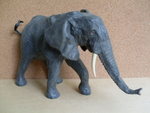
Country/State : colombia
Age : 66
Joined : 2010-11-05
Posts : 5897
 |  Subject: Re: Mathison Museum of Natural History Subject: Re: Mathison Museum of Natural History  Thu May 30, 2024 11:57 am Thu May 30, 2024 11:57 am | |
| |
|
  | |
bmathison1972

Country/State : Salt Lake City, UT
Age : 52
Joined : 2010-04-13
Posts : 6718
 |  Subject: Re: Mathison Museum of Natural History Subject: Re: Mathison Museum of Natural History  Thu May 30, 2024 9:36 pm Thu May 30, 2024 9:36 pm | |
| Species: Oryx leucoryx (Pallas, 1777) Common name(s): Arabian oryx; white oryx About the Figure: Manufacturer: Safari Ltd. Series: Wild Safari Wildlife Year of Production: 2006 Size/Scale: Height at shoulder approximately 7.5 cm for a scale of 1:12-1:18.7 Frequency of species in toy/figure form (at time of posting): Very rare Miscellaneous Notes: The only other standard version of this species I am aware is was produced by Mojö Fun in 2019. If I remember correctly, promotional pics of the Mojö oryx showed the model painted like a hybrid between an Arabian oryx and gemsbok, but was corrected for the final product. About the Animal: Geographic distribution: Middle East Habitat: Arid plains, deserts, rocky hillsides Diet: Grasses, shrubs, melons, succulent bulbs IUCN Status (at time of posting): Vulnerable Miscellaneous Notes: Historically, Oryx leucoryx was widespread in the Middle East, especially on the Arabian Peninsula. During the 19th and 20th centuries, their population was reduced to Saudi Arabia and by 1914, only a few populations existed in the wild outside that country. By the 1930s, the only remaining populations in the wild were in the Nafud Desert and the Rub' al Khali in Saudi Arabia. In the 1960s, the Phoenix Zoo in Arizona (my hometown zoo!) and the Fauna and Flora Preservation Society of London started captive-breeding programs and in 1968 the Al Ain Zoo was founded in Abu Dhabi to conserve the animals. Today there over 1,200 Arabian oryx in the wild and 6,000-7,000 in zoos and preserves. The Arabian oryx is the first animal to go from an IUCN classification of Extinct in the Wild to Vulnerable! [You must be registered and logged in to see this image.] |
|
  | |
Joliezac

Country/State : New Jersey, USA
Age : 22
Joined : 2021-04-27
Posts : 2436
 |  Subject: Re: Mathison Museum of Natural History Subject: Re: Mathison Museum of Natural History  Fri May 31, 2024 12:16 am Fri May 31, 2024 12:16 am | |
| Another beautiful figure by Safari!
_________________
Jolie
Animal Ark Website
Animal Figure Photography Website
|
|
  | |
rogerpgvg
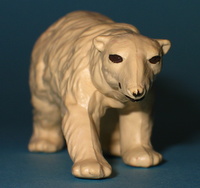
Country/State : UK
Age : 54
Joined : 2016-04-29
Posts : 3897
 |  Subject: Re: Mathison Museum of Natural History Subject: Re: Mathison Museum of Natural History  Fri May 31, 2024 7:36 am Fri May 31, 2024 7:36 am | |
| A species with a feel-good story! |
|
  | |
widukind

Country/State : Germany
Age : 48
Joined : 2010-12-31
Posts : 45777
 |  Subject: Re: Mathison Museum of Natural History Subject: Re: Mathison Museum of Natural History  Fri May 31, 2024 5:14 pm Fri May 31, 2024 5:14 pm | |
| |
|
  | |
bmathison1972

Country/State : Salt Lake City, UT
Age : 52
Joined : 2010-04-13
Posts : 6718
 |  Subject: Re: Mathison Museum of Natural History Subject: Re: Mathison Museum of Natural History  Fri May 31, 2024 9:39 pm Fri May 31, 2024 9:39 pm | |
| Species: Dorcus hopei binodulosus Waterhouse, 1874 About the Figure: Manufacturer: Sega Series: Mushi King - small series, standard Year of Production: unknown Size/Scale: Body length (including mandibles) approximately 4.5 cm for a scale of 1:1.8 for a large major male Frequency of species in toy/figure form (at time of posting): Very common Miscellaneous Notes: This is the seventh time we've seen D. h. binodulosus in the Museum; it is one of the most commonly beetle produced species by Japanese manufacturers. The Sega 'small standard series' were 10 sets of 10 figures each, for a total of 100 figures representing 65-75 species of Lucanidae and dynastine Scarabaeidae. The dates of release are currently unknown to me (c. 2008). The figures were produced in conjunction with Bandai and came with Pokemon-style playing cards. At the time of this writing, I think I have all but two of the species. For a review of the sets, please see the overview by forum member Beetle guy here. The tree in this photo is by Toymany; it was originally produced for their koalas but it can now be purchased by itself. About the Animal: Geographic distribution: Japan, Korean Peninsula Habitat: Broadleaf forests Diet: Larvae breed in rotting wood; adults feed on tree sap IUCN Status (at time of posting): Not Evaluated Miscellaneous Notes: Dorcus hopei and its subspecies are sometimes considered subspecies of D. curvidens, resulting in the combinations D. curvidens hopei and D. curvidens binodulosus. [You must be registered and logged in to see this image.] |
|
  | |
bmathison1972

Country/State : Salt Lake City, UT
Age : 52
Joined : 2010-04-13
Posts : 6718
 |  Subject: Re: Mathison Museum of Natural History Subject: Re: Mathison Museum of Natural History  Sat Jun 01, 2024 9:41 pm Sat Jun 01, 2024 9:41 pm | |
| Species: Actias luna (Linnaeus, 1758) Common name(s): luna moth; American moon moth About the Figure: Manufacturer: Safari Ltd. Series: Smithsonian Insects Year of Production: 1997 Size/Scale: If spread like a specimen, wingspan would come to approximately 17.5 cm for a scale of 2.3:1-1.7:1 Frequency of species in toy/figure form (at time of posting): Rare Miscellaneous Notes: The tube-sized A. luna figure produced by Innovative Kids for the Groovy Tube Books: Bug Blast! collection appears to have been influenced by this Safari figure (as were the stag beetle, flea, and monarch from the same tube). About the Animal: Geographic distribution: Eastern North America Habitat: Deciduous hardwood forests, parks, gardens, suburban areas Diet: Larvae feed on the leaves of a variety of hardwood trees, including Betula (birch), Diospyros (persimmon), Liquidambar (sweetgum), Carya (hickory, pecan), Juglans (walnut), and Rhus (sumac); adults do not feed. IUCN Status (at time of posting): Not Evaluated; NatureServe status is Secure Miscellaneous Notes: The elongated tails of the hindwings of A. luna are thought to confuse the echolocation detection used by predatory bats. [You must be registered and logged in to see this image.]Head's up: There won't be a post tomorrow (6/2). |
|
  | |
widukind

Country/State : Germany
Age : 48
Joined : 2010-12-31
Posts : 45777
 |  Subject: Re: Mathison Museum of Natural History Subject: Re: Mathison Museum of Natural History  Sat Jun 01, 2024 10:55 pm Sat Jun 01, 2024 10:55 pm | |
| |
|
  | |
bmathison1972

Country/State : Salt Lake City, UT
Age : 52
Joined : 2010-04-13
Posts : 6718
 |  Subject: Re: Mathison Museum of Natural History Subject: Re: Mathison Museum of Natural History  Mon Jun 03, 2024 9:55 pm Mon Jun 03, 2024 9:55 pm | |
| Species: Oncorhynchus mykiss mykiss (Walbaum, 1792) Common name(s): Kamchatkan rainbow trout About the Figure: Manufacturer: Yujin Series: Freshwater Fish Pictorial Book 1 Year of Production: unknown Size/Scale: Body length approximately 6.5 cm long for a scale of 1:9.2-1:18.8 Frequency of species in toy/figure form (at time of posting): Very rare Miscellaneous Notes: Yujin did not market this figure at the subspecies level, and the identification is mine based on geographic proximity to Japan. The fish is removable from its base. About the Animal: Geographic distribution: Russian Far East (Kamchatka Peninsula, Commander Islands, Sea of Okhotsk); introduced to many other parts of the world for sport fishing and aquaculture Habitat: Streams and rivers; some populations anadromous Diet: Aquatic invertebrates, fish, fish eggs IUCN Status (at time of posting): Not Evaluated Miscellaneous Notes: Oncorhynchus mykiss is considered an invasive species in 87 countries. Most, if not all, of these introductions are presumably O. mykiss mykiss. Impacts of these introductions include hybridization, disease transmission, predation, and competition with native species. [You must be registered and logged in to see this image.] |
|
  | |
widukind

Country/State : Germany
Age : 48
Joined : 2010-12-31
Posts : 45777
 |  Subject: Re: Mathison Museum of Natural History Subject: Re: Mathison Museum of Natural History  Tue Jun 04, 2024 3:42 am Tue Jun 04, 2024 3:42 am | |
| |
|
  | |
bmathison1972

Country/State : Salt Lake City, UT
Age : 52
Joined : 2010-04-13
Posts : 6718
 |  Subject: Re: Mathison Museum of Natural History Subject: Re: Mathison Museum of Natural History  Tue Jun 04, 2024 9:48 pm Tue Jun 04, 2024 9:48 pm | |
| Species: † Borealopelta markmitchelli Brown et al., 2017 About the Figure: Manufacturer: PNSO Series: Prehistoric Animal Models Year of Production: 2020 Size/Scale: Body length approximately 18.5 cm for a scale of 1:30 Frequency of species in toy/figure form (at time of posting): Rare Miscellaneous Notes: In 2019, CollectA also produced a standard-sized version of this species. Both figures are generally comparable in quality and accuracy, so one can't really go wrong with either. However, CollectA's is likely to be less expensive! If anyone is curious, the paint is not coming off on my model; the white seen are glares (the paint has a rather glossy finish). About the Animal: Geographic distribution: Early Cretaceous (Albian) of present-day Canada Habitat: Open forests, fern meadows Diet: Vegetation; especially ferns IUCN Status (at time of posting): N/A [prehistoric] Miscellaneous Notes: Examination of the stomach contents preserved in the type specimen of B. markmitchelli suggests a fern-rich diet and it has been speculated that Borealopelta may have been a highly selective feeder of ferns. [You must be registered and logged in to see this image.] |
|
  | |
widukind

Country/State : Germany
Age : 48
Joined : 2010-12-31
Posts : 45777
 |  Subject: Re: Mathison Museum of Natural History Subject: Re: Mathison Museum of Natural History  Wed Jun 05, 2024 3:33 am Wed Jun 05, 2024 3:33 am | |
| |
|
  | |
bmathison1972

Country/State : Salt Lake City, UT
Age : 52
Joined : 2010-04-13
Posts : 6718
 |  Subject: Re: Mathison Museum of Natural History Subject: Re: Mathison Museum of Natural History  Wed Jun 05, 2024 9:49 pm Wed Jun 05, 2024 9:49 pm | |
| Species: Apodemus speciosus (Temminck, 1844) Common name(s): large Japanese field mouse About the Figure: Manufacturer: Kaiyodo Series: Choco Q Animatales Series 11 Year of Production: 2006 Size/Scale: Figure approximately 3.5 cm tall and 3.5 cm across its widest points. Scale difficult to calculate because of the animal's pose, but using hind foot as a metric (n=1.1 cm) scale comes to approximately 1:1.8-1:2.6. Frequency of species in toy/figure form (at time of posting): Very rare Miscellaneous Notes: Being one of the original Choco Q Animatales, some assembly is required. Kaiyodo previously produced this species for the original Chocoegg series in conjunction with Furuta. About the Animal: Geographic distribution: Japan Habitat: Forests, grasslands, riverine fields, agricultural fields Diet: Primarily seeds and nuts; occasionally rhizomes and small invertebrates IUCN Status (at time of posting): Least Concern Miscellaneous Notes: Apodemus speciosus can eat seeds and nuts high in tannins, which would be toxic to most other rodent species. The large Japanese field mouse can consume seeds high in tannins by the secretion of specialized proteins and symbiotic bacteria that aid in digestion. However, the mouse can also display foraging behavior to select for seeds low in tannins, perhaps to regulate the amount of tannins they consume. [You must be registered and logged in to see this image.] |
|
  | |
widukind

Country/State : Germany
Age : 48
Joined : 2010-12-31
Posts : 45777
 |  Subject: Re: Mathison Museum of Natural History Subject: Re: Mathison Museum of Natural History  Thu Jun 06, 2024 2:54 am Thu Jun 06, 2024 2:54 am | |
| |
|
  | |
Sponsored content
 |  Subject: Re: Mathison Museum of Natural History Subject: Re: Mathison Museum of Natural History  | |
| |
|
  | |
| | Mathison Museum of Natural History |  |
|
